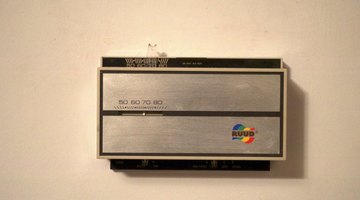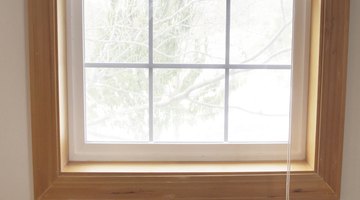How to Convert a Garage for Pets
Turning your garage into a safe and secure place for your pets is a viable solution to leaving them outside or letting them wreak unintentional havoc in your home. Creating a pet-friendly garage quarters may require some professional know-how, but some of the renovation and reconstruction you can do on your own.

Climate Control

Temperature control is the first consideration when you're designing a pet habitation in your garage. Since most pets require temperatures much like our own, extending your home's heating and cooling system into your garage is the best way to accommodate them. Such a renovation usually requires duct extensions and additional vents, which you should let a housing or A/C contractor handle. Adding an independent air conditioning system, such as a ductless mini-split apparatus, is another option, but it is more costly. Installing a thermostat and thermometer in your garage will ensure your pet's safety.
Pets Need Fresh Air

When converting a garage to a pet habitat, proper ventilation is essential. Ventilation provides fresh air your pet needs and prevents buildup of contaminants such as mold spores, bacteria, dust and allergy-causing pollens. In areas where humidity is high, lack of ventilation can cause buildup of unhealthy mildew. Natural ventilation is the best choice for a garage habitat. Achieve wind-driven fresh air with overhead vents and open windows. Since most garages have few to no windows, consider adding some -- they offer your pets access to essential sunshine. If your garage is not suited for natural air ventilation, mechanical ventilation systems are available.
Remove Potential Hazards

Before your garage can be a safe haven for your pets, you must remove all harmful substances and dangerous obstructions. Chemicals harmful to animals through exposure or ingestion include cleaning products, antifreeze, insecticides, paint, alcohol, petroleum products, pesticides, herbicides, drain cleaner, swimming pool products, mothballs, batteries, paint supplies and automotive additives. There are more. Remove all of them. Remove dangerous implements and mitigate pitfalls. Remove sharp objects including nails, tacks, staples, cutting instruments and other tools. Hazards creating a potential for hanging, entanglement, or should be removed, along with items that pets could knock over. The pet portion of your garage is no longer for your mower and your golf clubs. If fresh paint is present, eliminate fumes prior to pet habitation.
Creature Comforts

When your dog's making home in a converted garage, he should be confined to a designated area. Depending on his size, a compartmentalized pen works well. Use plywood to create an area with enough room for your dog to stand and walk around. No ceiling is necessary, but the walls should be tall enough to confine the dog. Cats should have a safe retreat, such as a transport crate with open door, perhaps on a tabletop the dogs can't reach. Small pets must stay housed in their cages or terrariums. Leave a stash of toys and treats for your pets, and provide fresh water daily. Provide a blanket or pet bed. Leave a radio on low for the comfort of background noise.
References
- The Weather Channel: Winter Pet Care
- The Weathe Channel: Protect Pets From Summer Scorchers
- Indiana Public Media: Moment of Science
- Vetco New Mexico: Vet Co
- Home Innovation Research Labs: Tool Base TechSpecs - Whole-House Ventilation Systems
- Signature Contractors: Gone to the Dogs: Converting a Spare Room Into a Pet Room
Photo Credits
- Mekenzie Hemstreet/Demand Media
- Mekenzie Hemstreet/Demand Media
- Mekenzie Hemstreet/Demand Media
- Mekenzie Hemstreet/Demand Media
- Mekenzie Hemstreet/Demand Media
- Mekenzie Hemstreet/Demand Media
More Articles



